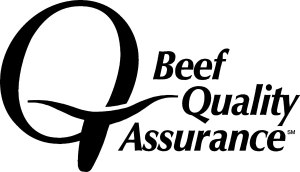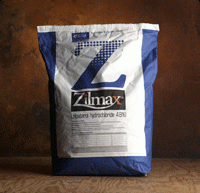How do Ranchers Provide Consumer Trust and Animal Welfare
 By Dr. John Paterson, Executive Director of Education, NCBA
By Dr. John Paterson, Executive Director of Education, NCBA
The public is not demanding to know where food comes from because it has figured that out. The public wants to be assured that the people who produce food can be trusted to care for animals and to use on-farm technology responsibly and sustainably. Ninety six percent of consumers say that they support raising cattle for food only if ranchers provide good care for their animals and treat them humanely (Food Safety Survey, Nov. 2008).
Research (Consumer Attitudes to Animal Welfare) reveals that consumers know very little about the agricultural supply chain, and in particular, they are often deliberately ignorant of anything that happens between slaughter and consumption.
Research from the 1980’s showed that consumers wanted beef that had acceptable taste, was convenient to prepare, nutritious, and a variety of cuts could be purchased at a reasonable price. Today, consumers still want these same traits, but now they also want assurances about the environment, social causes, and animal welfare. The term “story beef” has come into vogue because consumers are asking questions about how livestock producers raised the beef.
For example, did the producer live nearby, did he treat ranch workers fairly, did he practice environmental stewardship, did the ranch operate sustainably, did the producer receive a fair price and did he/she properly care for the animals (Smith, 2008)? Three-fourths of grocery shoppers indicated that they wanted information about the content, origin and how food was grown, processed and manufactured.
Women account for 93% of US food purchases and feel a strong emotional attachment to beef. The fact that most beef comes from family farms, and that farmers’ care about their animals and the beef they produce resonates with women (John Maday, Drovers J., July, 29, 2010).
The three emotional pillars that female shoppers want from beef include:
- the assurance that family ranchers care about their animals and beef quality;
- that oversight from USDA and FDA assures that today’s beef is safer than ever and;
- the shopper wants control over food-purchasing decisions.
Whom do consumers trust for humane treatment of farm animals? Janice Swanson from Michigan State University said that consumers trust people like themselves most, followed by advocacy groups, farmers/producers, federal regulatory agencies, grocery stores, restaurants and lastly food companies and processors. Consumers assign to farmers and advocacy groups more responsibility for the humane treatment of farm animals than to any other group.
Of more than 1,000 respondents to a 2007 Oklahoma State University survey, 52% said personal food choices have a large impact on the well-being of farm animals, and 49% said they consider the well-being of farm animals when they make food purchasing decisions (Lusk JL, et al, Consumer Perceptions for Farm Animal Welfare: Results of a Nationwide Telephone Survey, Oklahoma State University, Department of Agricultural Economics, 2007.). This study clearly demonstrated (Table 1) the importance placed on various animal husbandry issues.
Have ranchers responded to consumer concerns? The fundamental values of animal science have traditionally been improved production and efficiency. Rollin (2010) argues that the science of animal production and husbandry needs to also respect animal nature, minimize pain and distress, control environmental degradation growing out of production systems, exhibit concern for animal production in rural communities and show concern for animal needs and nature.
It is the cattle farmer’s responsibility to ensure that the focus of scientific research and on-farm animal care continues to improve animal well being. It is the farmer’s job to convey the message that “I care for my animals, and I am competent in providing that care” to the American consumer.
The National Cattlemens’ Beef Association has worked diligently to articulate the “Producer Code for Cattle Care,” which are sound production practices. These practices include:
- To provide adequate food, water and care to protect cattle health and well-being;
- To provide disease prevention practices to protect herd health;
- To provide facilities that allow safe and humane movement and/or restraint of livestock;
- To provide personnel with training to properly handle and care for cattle and;
- To make timely observations of livestock to ensure basic needs are being met.
Dr. Dave Daley, Professor of Animal Science at California State University-Chico, predicted how livestock producers can lose an argument over an animal welfare issue (How to Lose the Argument on Animal Welfare – Top 10 Reasons, Southwest Farm Press, March 16th 2010). Among the predictions he made were:
Do not assume that science will give us all the answers; it only gives us some of the answers. Science does not solve ethical questions;
Argue that economics justifies all of our practices. It makes logical sense for us to say “well of course we treat them well or we will not make money”. If this is only about making money rather than working with animals, we probably should be in another line of work. We need to convince the public that we truly care about animals, not just about dollars;
Not working hard enough to build coalitions that include the consumers;
Finally, have we asked livestock producers about these issues? The overwhelming majority will respond ”animals have the right to be treated humanely and ethically.”







